To help us provide you with free impartial advice, we may earn a commission if you buy through links on our site. Learn more
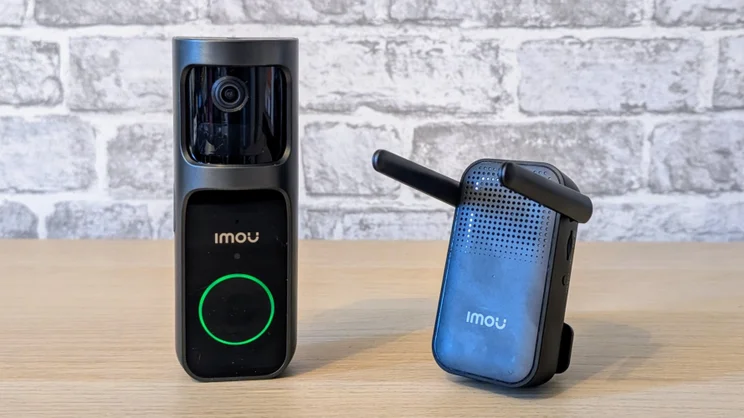
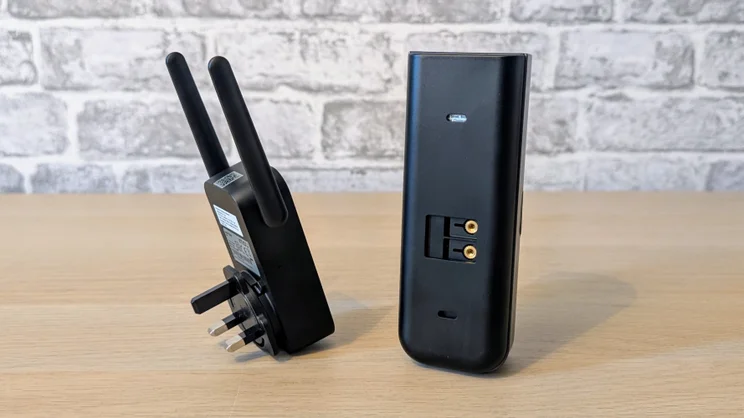
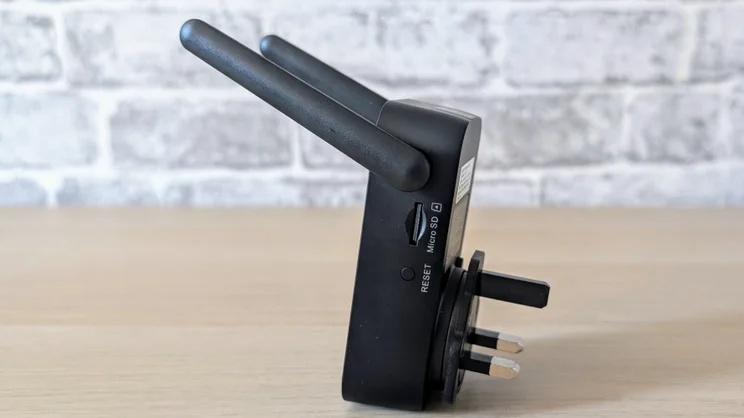
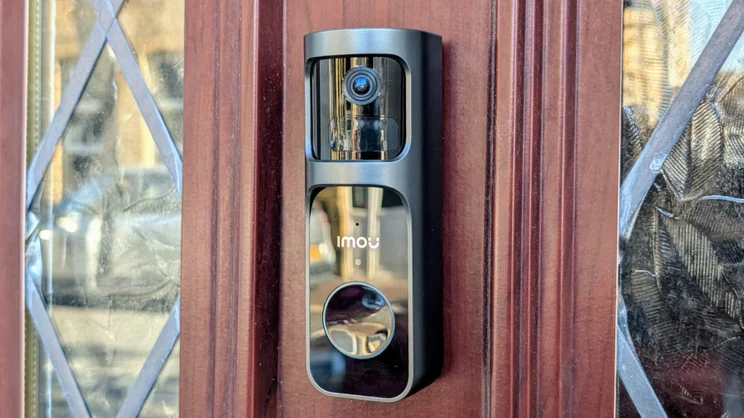
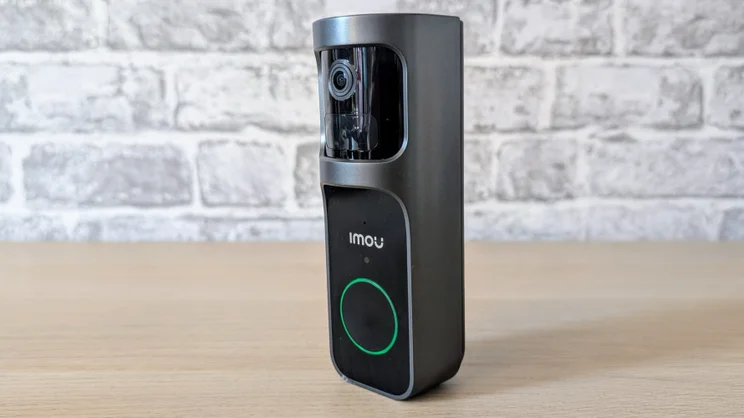

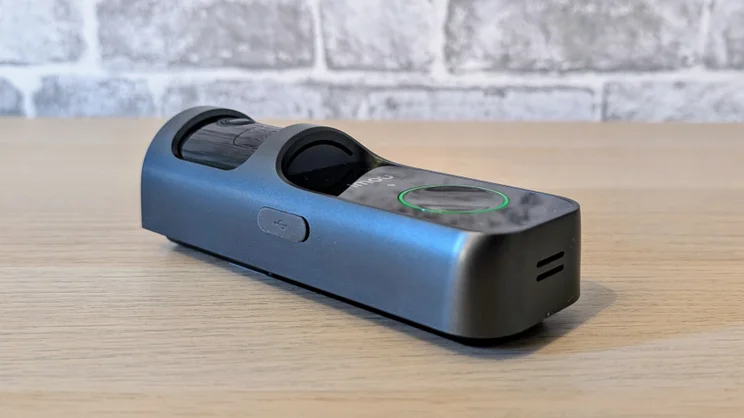
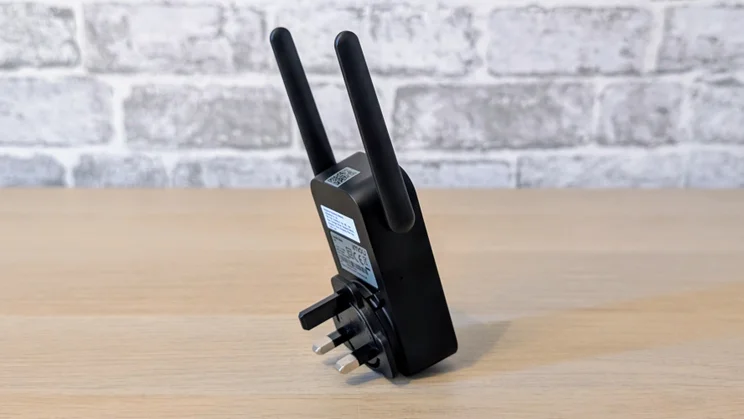
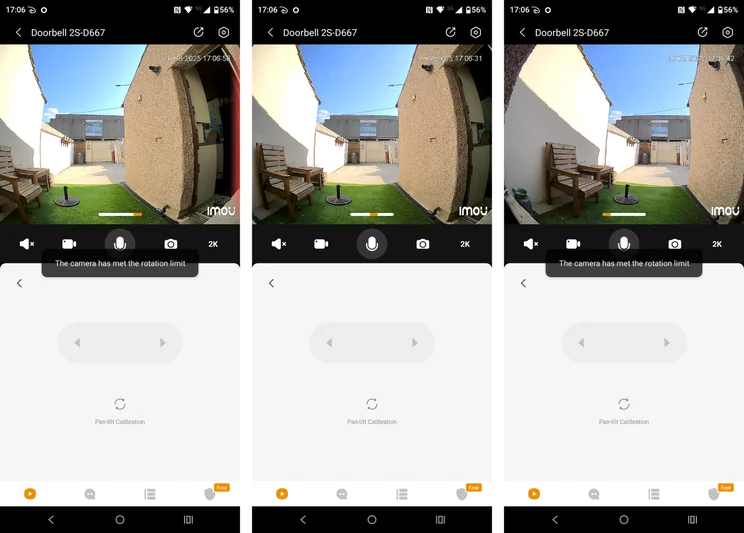
- 166-degree panning camera
- Bundled Wi-Fi extender/chime
- Loiter detection and voice disguise
- No USB charger included
- Bulky
Imou, or to give the company its full name, Hangzhou Huacheng Network Technology Co. Ltd, may not be as well known in the West as the likes of Tapo, Ring, Blink and Nest, but it’s been making networked cameras and other IoT (internet of things) kit since 2015, so it’s no newcomer to the game.
Most recently, Imou has launched two new video doorbells: the Doorbell 2S and the Doorbell 3. The latter will set you back £113 while the former is an altogether more wallet-friendly £75. It’s the cheaper model Imou has sent me to test and it has one rather clever trick up its sleeve.
Imou Doorbell 2S: What do you get for the money?
Where most video doorbells have one or, if you’re lucky, two static cameras to cover the area in front of your front door, the Imou’s camera unit has a motor enabling it to pan left and right, extending its horizontal field of view by 15-degrees on either side.
Otherwise, the doorbell is pretty standard. The camera itself captures video up to 2K in resolution, offers infrared night vision and PIR motion detection, and comes with a small Wi-Fi extender-cum-chime unit in the box so you don’t have to worry about spending more just to be able to hear the doorbell.









The latter plugs into a standard UK plug socket and it also has a slot for a MicroSD card (capacities up to 512GB are supported). This means you don’t have to pay a monthly subscription just to record and access motion-activated video clips, as you do with Ring doorbells.
You can, of course, opt to have your clips recorded to the cloud if you want. But this will cost you. The basic Imou Protect package is £3.49 a month and gives you a week of cloud storage, along with enhanced AI detection to distinguish between humans, animals, vehicles and packages. For £5.29 a month, you get the same but with 30 days of rolling storage.
Given that this is a doorbell rather than a full-on security camera, I think most potential purchasers will be happy with just local storage. Even without the fancy AI extras, the camera can be told to alert you only if it detects a human presence. If not, then £3.49 is a pretty good deal to get those features. Ring charges £5 per month.
As for power, that’s supplied by a 5,000mAh battery that is charged via a USB-C socket in the side of the camera housing, so you’ll need to remove it from its base to charge it. Imou supplies a USB-C cable but not a charger.
Alternatively, you can power it via the mains, if you alread have a transformer in place from an old-school doorbell (or can stomach paying an electrician to install one for you). On the rear is a pair of screw connectors supporting power supplies capable of outputting between 8V and 24V.









How easy is it to set up?
Setting the Imou up proved pretty painless. First off, you’ll need to download the Imou Life app from either the Android Play Store or Apple Store and set up an account. Next, you have to scan the QR code on the Wi-Fi extender/chime and input your home network security code when prompted. Only 2.4GHz networks are supported.
The next step is to have the app pair the extender with the doorbell, which means you’ll need to charge the battery first. And here I met with my first hurdle: all the USB-C chargers in my office are rated 45W or higher, and the Imou didn’t want to play ball with any of them. Only when I dug out an old, basic 5V 2A charger was I able to get it to take a charge.









It’s not all bad news, though. The great advantage of Imou combining a Wi-Fi extender with the chime unit is that it ensures a greater likelihood of getting a strong connection to your network, no matter where your router is positioned, so there’s no need to go buying extra kit to get the signal to your door in most circumstances.
And mounting the thing shoul be straightforward, too. Imou supplies all the screws, templates and sticky pads needed and the mounting bracket clips securely to the camera unit. Releasing the camera bracket for charging involves the use of a SIM tray pin, which Imou includes, too.









However, the sheer size of the Imou doorbell may cause some folk an issue. At 50.3 x 55 x 150mm (WDH), it’s even bigger than the chunky Tapo D235 and it dwarves the likes of the current Ring and Blink doorbells.
The size caused me no problems because my front door has a wide panel between the two upper windows pains but I do forsee potential issues if you want to fit it to an all-glass door with a very thin frame.
Imou doesn’t make much of an effort to tell you which 3rd party ecosystems its kit will play nicely with, but I found the 2S worked with Alexa and Google Home. Imou is also a member of the ONVIF standards group, so its cameras should work with third-party hubs and the like, though this wasn’t something I was able to test.
What does it do well?
The Imou’s party piece is its panning camera. The lens has a standard field of view of 136 degrees horizontal, 98 degrees vertical and 166 degrees diagonal, but the motorised gimbal adds another 15 degrees of left and right coverage, giving a total of 166 degrees in the horizontal.
That still can’t match the 170.6-degree horizontal viewing angle of the Tapo D235, but the Tapo suffers from some fish-eye distortion at the edges of the image, which the Imou does not.
To make the most of the motorised camera mount, the system can be set to track and record motion as it moves from one side to the other. Camera tracking can be disabled in the name of extending the battery life, but you can also manually track using the app, with the lens moving smoothly and promptly. A red highlight appears at the far edge of the display when you’ve reached the maximum degree of movement.









An unusual feature of the Imou is loiter detection. What this does is rather than send a notification when general motion or human motion is detected, it only sends a notification if the movement source stays within detection range for an set period of time between 8 and 15 seconds.
This is very handy if, like me, you have a front door that opens directly onto the pavement, so you don’t want an alert every time someone walks by, but only when someone stops and hangs around a bit too long.









When it comes to basic quality, the 1/2.8” CMOS sensor produces impressive 3MP (2,048 x 1,536 / 4:3) images that are bright, colourful and crisp in daylight. The digital zoom gets you closer to the action by up to a factor of eight, and the drop-off in quality isn’t too bad.
The camera does well in low-light environments, with colour night-time images also looking bright and colourful in all but the very darkest environments. In the absence of any discernible ambient light, the monochrome infrared imagery is sharp with good contrast, too, and usefully the Imou 2S lets you force the camera to stay in colour night mode rather than switching to infrared whenever it thinks is best. And it doesn’t insist on the LED ring light being on in colour mode, either.
The voice communication system has a brace of features I liked. One was the facility to launch a pre-recorded voice reply at the touch of a button. The app comes with a remarkably lifelike dog bark prerecorded, which would certainly make me think twice about forcing an entry, and it’s easy to record personal messages.









Secondly, if you want to talk to someone live via the doorbell but want to disguise your identity, the app lets you change your voice in real-time to mimic either a male or an electronic voice.
Like the dog barking, the imitation basso-profundo male voice was surprisingly convincing, although the electronic voice sounded more like someone who’d been at the helium than Robbie the Robot from Forbidden Planet.
Imou estimates that a full charge of the 5,000mAh battery should last for approximately 120 days of general use. During the week I had the 2S on test the battery only showed a 5% drop, and I usually put doorbells to more intense use when reviewing than they’d get in normal use. That suggests a charge every three months is about right.
When I tested the 2S’s reaction times, it proved very similar to the Tapo D210 and D235 in most metrics, with only the time taken to launch a live feed from the app tracking a little longer. The difference was a matter of a second here and there, though, which makes very little difference in the real world.
Finally, Imou’s app gets a thumbs up. It’s easy to navigate, the layout is user-friendly, and on Android it supports four homescreen widgets, one of which launches a live video feed with just one tap.
What could it do better?
The Imou’s two most obvious failings are pretty common to all doorbell and security cameras with a price tag of under £80. The Wi-Fi radio only supports the 2.4GHz frequency band, and the camera can only record video at 15fps. Neither are deal breakers in my opinion.
Also worth noting is that, while Imou advertises the 2S as “weatherproof”, it doesn’t quote an official IP65/66 rating.
Imou Doorbell 2S: Should you buy it?
The Doorbell S2 is the first bit of Imou kit I’ve tested, and on the back of it I’m keen to look at more of its products. The 2S is a solid product for the price that delivers impressive basic performance and has a few useful extra touches.
The panning camera offers an impressively wide field of vision without any of the fish-eye distortion that usually accompanies wide-angle fixed lenses, and the bundled chime adds value. Remember, a Ring chime will set you back an extra £30. All told, it’s an easily recommendable and good-value package.






